Visiting the “Island of the Colorblind” with Paul Chatem

Paul Chatem's "The Shell Game"
As our most recent installation week comes to a close, we’re getting our first look at the finished version of Paul Chatem’s “Island of the Colorblind” setup in Shooting Gallery. Curious as to what his intentions were (outside of creating a really kickass, intense body of new work), we sat down to chat with Paul about his show’s storyline, his own personal encounter with colorblindness, what it’s like to get to know yourself all over again, and the impulse to create a collection of works that invite the viewer to interact. We’re totally excited for his opening reception tonight, April 9, 2025 from 7-11 at Shooting Gallery. More photos and the full interview after the jump!
We’ve gotten a little taste of your ideas for “Island of the Colorblind,” can you maybe explain some of the inspirations that sparked the narrative behind this body of work?
The inspiration for this show was sparked from the period of time last year when I first escaped from Los Angeles and moved to the city of Visalia, in Central California. Immediately after moving into our new home, I had surgery on my face to remove some skin cancer from the tip of my nose. During the time I was recovering from my surgery I was working on my solo show the “Death of BigHead” for The C.A.V.E. Gallery. The first two months of being in a new town, stressed out about deadlines, my nose was covered with gauze and tape. My new neighbors looked at me with interest but never talked to me or introduced themselves. When I’d go out people would ask me what happened to my face? Usually followed by a joke, like “What happened did your Wife beat you up?” I could only seem to get about two hours of sleep at a time. I was haunted by vivid home invasion nightmares. When I looked in the mirror I stopped being able to see myself and was starting to feel like I was losing any sense of my identity. I’ve never been a vain person but after a period of time not being able to recognize yourself in the mirror – it gets to you. So during these months of working at all hours on that show, I found myself digging deep into my memory trying to recapture a sense of self. Who was my first grade teacher? What was the first album I bought? What was that kid’s name in seventh grade who wet his pants? I started listening to music that I hadn’t even thought about since High School, anything I could do to hold on to who I was before I was known at the liquor store as the guy with the bandage on my nose. As the nights went on, when I got to the point where I was trying to remember every book I ever read, I remembered the writings of Oliver Sacks (which I had read in college),specifically his book: “The Man Who Mistook His Wife for a Hat”, which deals with cases of dissociative disorders. This gave me a sense of, “OK I can handle this shit. I know what’s happening.” Then, tired of waiting, I took out the last of the stitches and looked in the mirror and immediately everything was back to normal.
After that show was done I began to reread the works of Oliver Sacks and decided to do a show based on his book title “The Island of the Colorblind”.
Where do you see pieces of yourself directly mirrored in the work you’ve made for the show, as well as the storyline you constructed?
The basic idea of the show was “What if there was an isolated island where every resident was a contradiction of the role that they took in their small society?” The cook doesn’t have a tongue, the artist was colorblind, the fiddle player only had one arm, the mandolin player is too big to play his instrument and is deaf, etc. but despite these problems, their society works, and everybody gets along until a new element is introduced into their world. I think everybody can identify with some aspect of this…whether it’s going to a new school, starting a new job, or moving to a new town. You might feel like you’re a fifth wheel, like you’re upsetting the synchronicity of a well oiled machine. The proverbial wrench in the works.

Paul Chatem's "Better Start Gettin' Square"
Why make moveable/kinetic art?
One night in Los Angeles I was making the rounds of the gallery openings, which I did every month. I walked into an opening of one of my favorite artists, made a quick loop of the space and planted myself in the corner to check out who was there. Then I realized “What the Fuck am I doing?” I’m here amongst these great pieces of art, and I didn’t spend more than thirty seconds in front of any one of the pieces. I looked around the crowd of people and hardly anyone was really looking at what was in front of them. So, I decided to figure out a way to get people to spend more time in front of my pieces and let them interact with the work, change the composition of the pieces, and be a part of the show
What’s it like for you to see a viewer interacting with a piece of your work?
It’s a little nerve racking to have people touch the work, especially at the openings, but it‘s great. I worry about little things like, “Did I tighten down all the screws?” Then there’s always people that don’t see the handle that they are supposed to turn to crank the gears, and they start touching parts of the painting that I never intended them to touch, so I end up running around the gallery making sure people understand what’s what. The pieces are built solidly, I don’t worry about them breaking, but they are wooden machines with paintings on them, and they took a lot of time to finish, so I want people to respect that, as well as have a good time interacting with the work.
Do you have a favorite moment/theme/visual that you’ve placed in some of the pieces for the show?
I haven’t really had time to let the work soak in yet. I’ve been working hard to get it all done, while letting it develop really organically. Once everything is hung in the gallery and I can look at it in it’s entirety, I’m sure I’ll see stuff that will stand out from others. I played around with a lot of new ideas. This was the first show that I’ve done where the main character was a nude female. Every painting I approached in different ways, some more realistic and some more cartoon-ish. I played with a lot of symbolism that I’ve touched on in passed shows, that I explored more in this show.
So exactly how much wood went into this show? Did you do any salvaging, or foraging for materials at all?
I don’t even know. Quite a bit. I’ve been on a tight budget these days, so I scavenged a good deal of the wood. I even took apart some shelves and cabinets in my house and used that wood, as well as wood I had left over from some of the construction jobs I’ve worked.
What about your relationship with the color in these new works?
I used different color combinations than I have in the past including using colors that I can’t differentiate as someone who is red/green colorblind. I used the classic colorblind test as a reoccurring design element in the pieces, as well as limiting my palette on certain paintings. I think the main thing people will notice with these new paintings is my use of white to create contrast. I’ve never used pure white in my paintings until now, but I think it worked out well.

Paul Chatem's "The Wrench in the Works"
Can you talk a little bit about your experience with colorblindness, and how you pushed beyond it, and even played with it in these pieces?
For a long time I concentrated on black and white ink work, always playing around with the idea of painting but struggling with it. I took painting classes in college, but the idea of painting what was in front of me didn’t really work out. I know the color wheel and how that works, but I have to keep my palette in a specific order to keep track of what’s there. There are a lot of times when I go to paint something red and make it brown. Pink looks like grey. Green and orange are impossible to differentiate for me. After college I tried to get several jobs in the commercial art world which would go pretty well until someone asked me to mix up paint to make something red or green or pink or purple. So swinging a hammer while painting on my own seemed to work out for the best.
With this show I didn’t worry about any of that, though from time to time I would have my girlfriend come in to the studio and tell me if what I’ve done made any sense.
Ideally, what would you like your audience to “see” in this work?
Ideally what I want from any of my shows is for someone to be surprised by what they find. I don’t want people to have an expectation. I try to push my ability every time and explore new aspects about myself and the world I live in. If people can see the hard work I put in and have respect for that I’m happy. If people find something they can identify with in the work that makes it even better.
What’s the first thing you’re going to do after the opening of “Island” this weekend?
Hopefully I’m going to get a full night’s sleep for the first time in a long time.


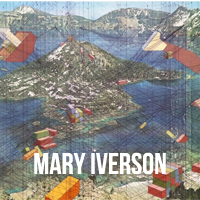
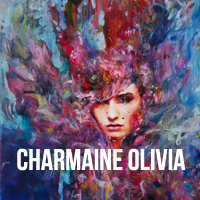
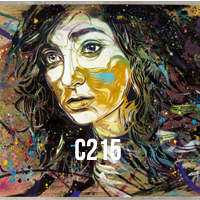
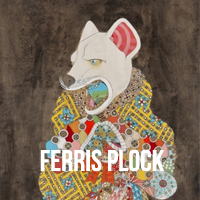
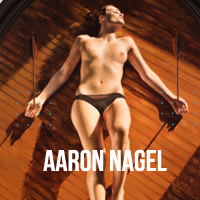
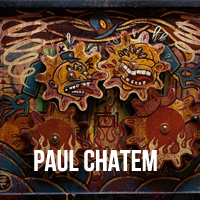
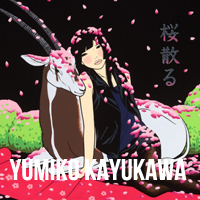
Amazing story…and you are an amazing individual!